The Jefferson nickel is one of the most popular US coins in modern times. It’s a coin that’s been around for 85 years and is still in production in the mints today. You likely have a handful of these five-cent coins in your pocket change—that’s how commonplace they are today.
It seems weird for an everyday coin like this to hold high value. But depending on the condition of your nickel and the year it was minted, it may be worth a lot. We’re talking hundreds or even thousands of dollars, depending on the coin grade and whether there are any errors on it.
A prime example of a Jefferson nickel that can sell for a high price today is the 1946 nickel. This coin is rich in history, thanks to World War II which shaped its composition.
But how much does a 1946 nickel cost? Do the mint marks “D,” “S,” and so forth mean anything and raise the prices? Read on to find out.
1946 Nickel Value Details
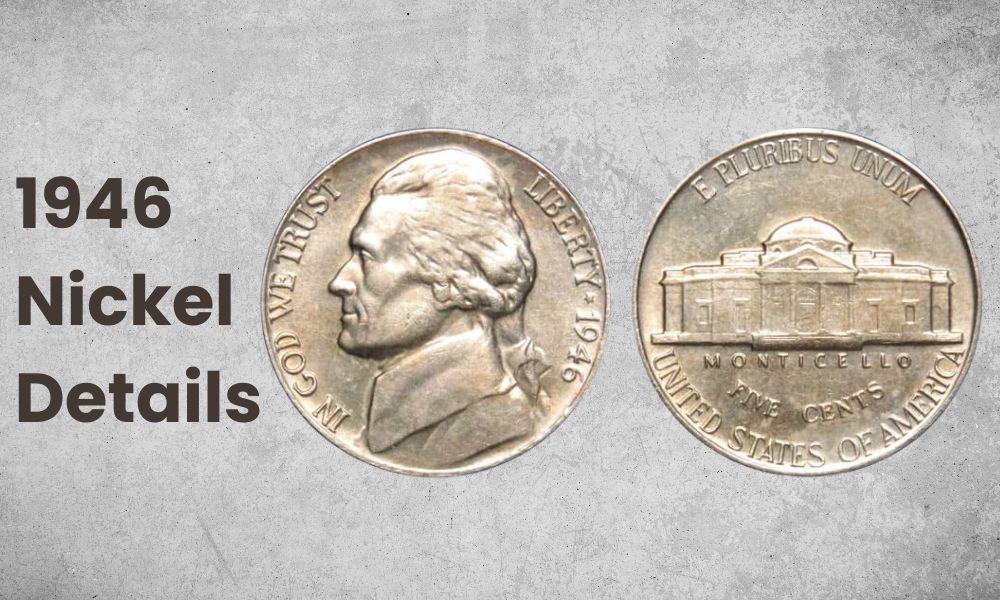
- Category: Jefferson Nickels
- Mints: Philadelphia, Denver, and San Francisco
- Total mintage: 219,968,200
- Obverse designer: Felix Schlag
- Reverse designer: Felix Schlag
- Edge: Plain
- Diameter: 21.2mm
- Content: 75% copper and 25% nickel
- Weight: 5g
The Jefferson nickel is a longstanding US coin that is one of the few to still be made in the same composition since its inception. That said, there was a short break to this when the government had to switch to a different composition during the war, but we’ll tell you about that later.
The 1946 copper nickel—like all nickels in this series—honors Thomas Jefferson, the country’s third president. The obverse of the coin features the side profile of the late president wearing a peruke wig and thick coat.
On the left side of the surface, “In God We Trust” is written. Meanwhile, “Liberty” and the year 1946 are embossed on the right side with a small star in between them.
The reverse of the coin is just as poignant. It depicts Monticello, Jefferson’s home in Charlottesville, VA which is now a historical landmark. At the very top of the coin are the words “E Pluribus Unum,” while the bottom shows the words “Monticello” “Five Cents,” and “United States of America.”
You’ll also see the mint mark of a 1946 Jefferson nickel on the right side of Monticello’s structure.
When the coin was first minted in 1938, it was made of copper and nickel. However, World War II forced the US to preserve nickel. Instead, an alloy of copper, silver, and manganese was used to make the five-cent during the war. These coins got the nickname “war nickels.”
1946 was the first year the coins reverted to their old composition, which is why the 1946 Jefferson nickel is extra special.
Also Read: 15 Most Valuable Nickels Worth Money
1946 Nickel Value Chart
| 1946 Nickel Value Chart | |||||
| Mint Mark | Good | Extremely Fine | AU-50 About Uncirculated | MS-60 Uncirculated | MS-67 Superb Gem Uncirculated |
| 1946 Nickel Value for No Mint Mark (P) | $0.10 | $0.30 | $0.35 | $0.65 | $425 |
| 1946 Nickel Value for “D” Mint | $0.10 | $0.30 | $0.40 | $0.70 | $175 |
| 1946 Nickel Value for “S” Mint | $0.10 | $0.40 | $0.45 | $0.70 | $100
Proof-Like: $350 |
1946 Nickel Values and Varieties Guides
1946 Nickel Value for No Mint Mark (P)
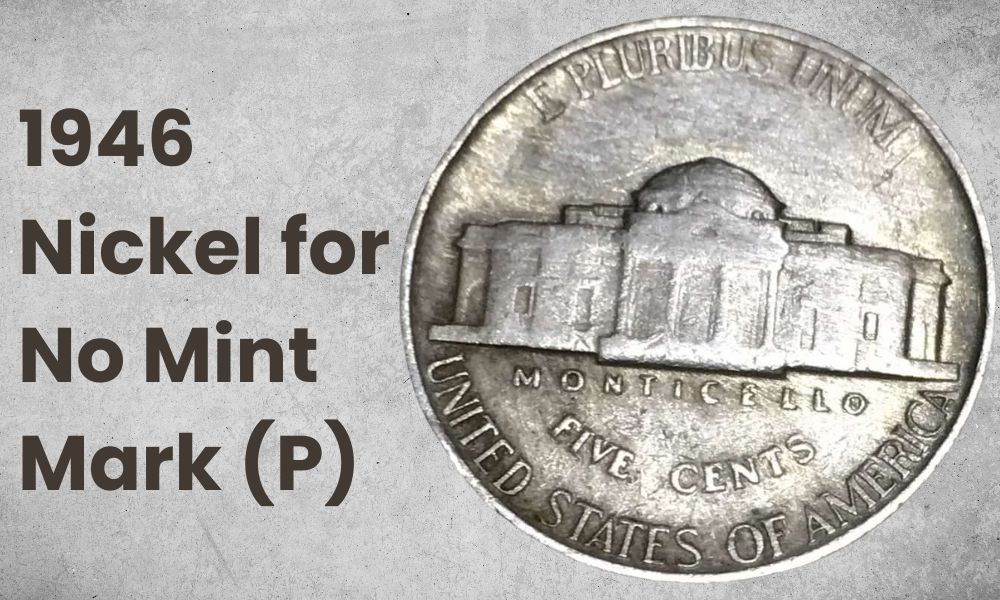
- Type: Jefferson Nickel
- Edge: Plain
- Mint mark: No mint mark (P)
- Place of minting: Philadelphia
- Year of minting: 1946
- Face value: $0.05
- $ price: $0.10 to $1,280
- Quantity produced: 161,116,000
- Designer: Felix Schlag
Over 161 million Jefferson nickel coins were minted at Philadelphia in 1946, which is quite high compared to other productions in US mints. But because World War II forced the US to slash its budget for most things, the nation’s coin quality eroded after the war.
So, these Philly-minted nickels are of poor quality overall. There are mint state 1946 nickels with no mint marks, but they’re harder to come by, making them more valuable.
A circulated 1946 nickel with no mint mark in good condition has a value of around $0.10, just double its face value.
But an uncirculated one can definitely get you more money. A choice uncirculated MS64 coin from the Philly mint is valued at $12.50, while a superb gem uncirculated MS67 one can get you a whopping $425.
1946 nickels also rise in price if it has a “Full Step” designation. A coin is labeled the grade 6FS if the Monticello steps have five distinct “steps” or lines, while a 5FS means the coin has four lines. It’s not often that a 1946 nickel will be awarded this designation, so they’re quite expensive.
For example, an uncirculated, Philly-minted 6FS 1946 nickel can go anywhere from $60 to $1,280. Meanwhile, a 5FS coin can go from $45 to $900.
The mark of a true Philadelphia-minted 1946 Jefferson nickel is that it doesn’t have a mint mark. If your nickel doesn’t have a mint mark next to the Monticello on the reverse, it’s a confirmed Philly-minted coin.
1946 Nickel Value for “D” Mint Mark
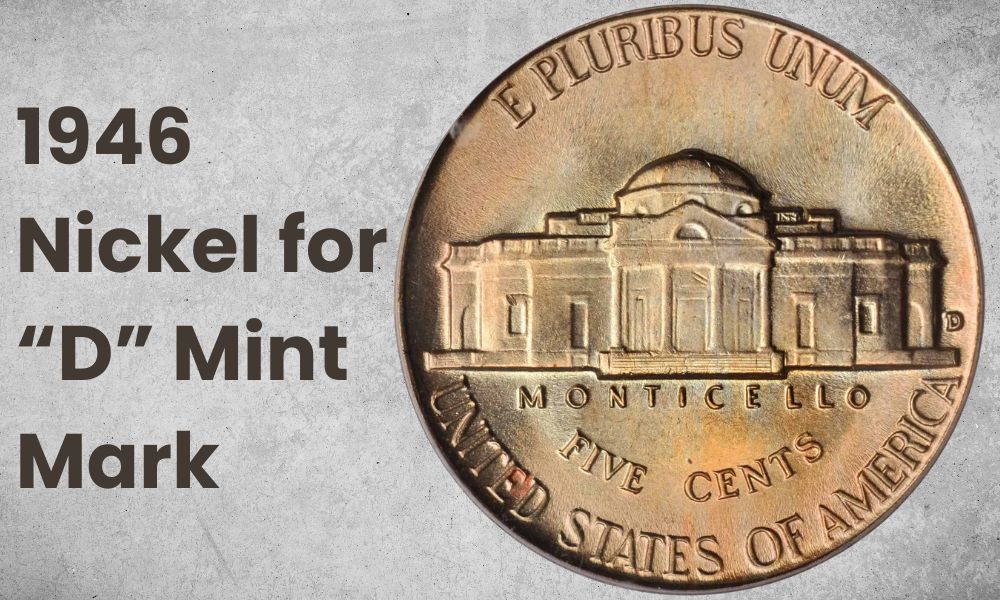
- Type: Jefferson Nickel
- Edge: Plain
- Mint mark: D
- Place of minting: Denver
- Year of minting: 1946
- Face value: $0.05
- $ price: $0.10 to $3,400
- Quantity produced: 45,292,200
- Designer: Felix Schlag
Compared to the Philadelphia and San Francisco mints that also produced the 1946 nickel, the Denver mint produced the most high-quality versions of the coin.
Because of this, there are way more 5FS and 6FS 1946 nickels in the mintage that are sought-after and of high value. An MS67+ 1946-D nickel labeled 5FS, for example, is valued at up to $3,400. However, it’s important to note that these coins are extremely rare.
Other uncirculated 1946-D nickels that range from coin grade MS60 to MS66 without that Full Step grade might be easier to find. Over the last 10 years, a handful of these have been auctioned off, including an MS66+ nickel with a mint mark error that was sold for $3,525 in 2016.
1946 Nickel Value for “S” Mint Mark
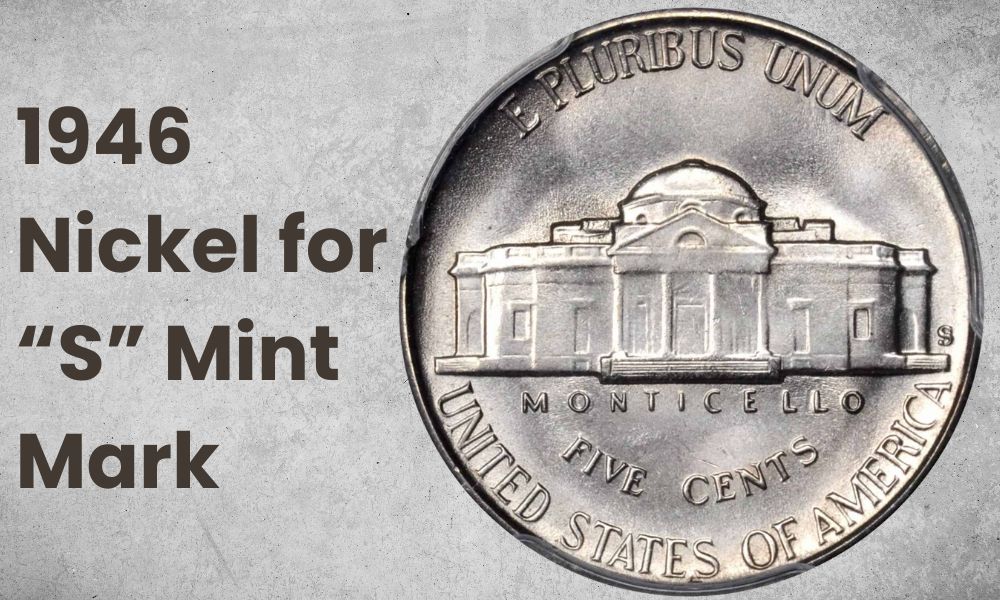
- Type: Jefferson Nickel
- Edge: Plain
- Mint mark: S
- Place of minting: San Francisco
- Year of minting: 1946
- Face value: $0.05
- $ price: $0.10 to $2,650
- Quantity produced: 13,560,000
- Designer: Felix Schlag
Of the three mints that produced the 1946 Jefferson nickel, the San Francisco mint made the least coins at just a bit over 13 million nickels. It was hoarded by collectors when they were new, so there are plenty of mint-state 1946-S coins that have been preserved until today.
A circulated 1946-S coin in good condition doubles its face value at $0.10. If the coin is extremely fine in condition, this value goes up to $0.40 apiece. The price increases for about circulated coins, but not by a lot. You would be able to sell an AU58 coin, for example, for $0.60.
Uncirculated coins will be more valuable than circulated ones. In the case of an MS65 1946-S nickel with little to no imperfections, the current value sits at $20. That’s 400 times the face value of a nickel!
What’s unique about the San Francisco Jefferson nickels of 1946 is that there were lots of proof-like coins that came out of the mintage. A proof-like coin is highly reflective and has distinct, high-quality lines in the design as if it was the first coin a brand new die had struck.
An MS67 proof-like coin would sell today for $350, which is more than triple the value of a regular, mint-state MS67 nickel.
Also Read: Top 110 Most Valuable Nickels Worth Money
History of the 1946 Nickel
In 1938, the US government was keen on replacing the Buffalo nickel with something more modern. Instead of commissioning an expert for the design, the competition to come up with the best coin was open to the public.
The Treasury had only two rules. The first is that the coin needed to commemorate Thomas Jefferson, the third president of the United States. The second rule was that the reverse of the coin had to depict the beautiful, serene Monticello. It was a coin that would cement Jefferson’s legacy.
There were almost 400 designs that were submitted to the Treasury. But the model of German-American Feliz Schlag was chosen for production. He also took home a cash prize of $1,000 for the design we know and love today. And so, the production of the coin started in 1938.
The 1938 version of the Jefferson nickel is still pretty much the same in composition and design as the nickels we have today. The only hitch in production came during the war when the US changed the composition to copper, silver, and manganese.
In 1946, after the war ended, the US proudly started minting Jefferson five-cent coins made of copper and nickel once more, and the rest is history.
Also Read: Top 19 Most Valuable Jefferson Nickels Worth Money
1946 Nickel Grading
Grading the 1946 nickel is comparable to how one might grade any other US coin. You need to look out for noticeable wear and tear to distinguish whether it was circulated or not. And then, depending on how stark the imperfections are, you grade it based on its condition.
Aside from the typical coin grading system of circulated, about circulated, and uncirculated conditions, nickels are also subject to being labeled 6FS or 5FS.
As mentioned earlier, a coin is graded 6FS if you can clearly see five full steps on the Monticello on the reverse of the coin. A 5FS is when you can see four clear lines instead of five.
Learn more about grading 1946 Jefferson nickels accurately by watching this video by CoinStudy:
1946 Nickel Errors
1. 1946 Nickel Transitional Silver Error
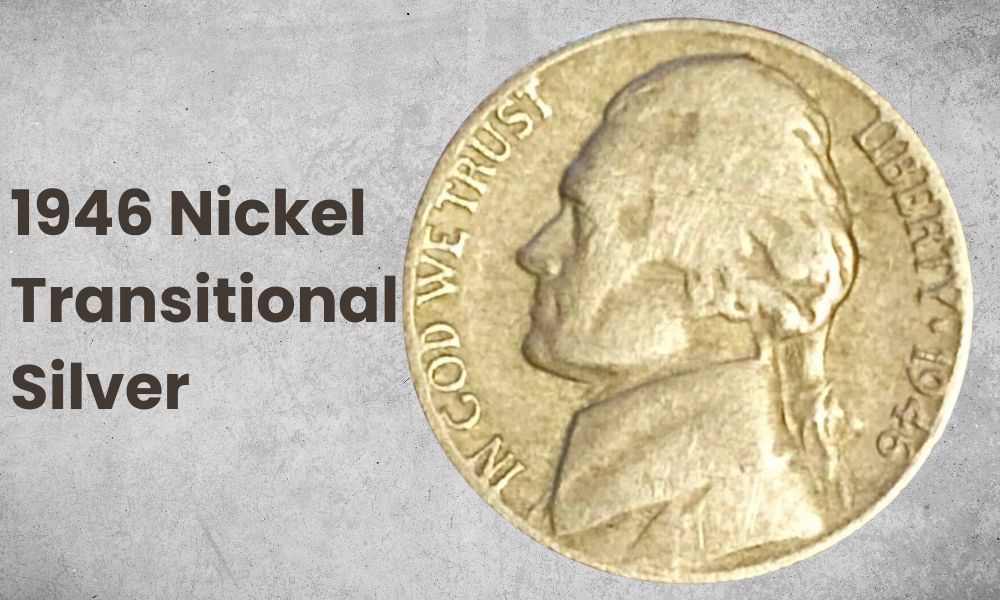
A common error among 1946 nickels is that some of them are made of silver. As mentioned earlier, the 1946 mintage of Jefferson nickels transitioned from the copper-silver-manganese alloy back to the copper and nickel combination.
Because there were still silver reserves left over for the five-cent coin when production in 1946 started, these silver planchets were somehow struck with the post-war design, creating a batch of “silver nickels.”
2. 1946 Nickel D Repunch Over Inverted D Error
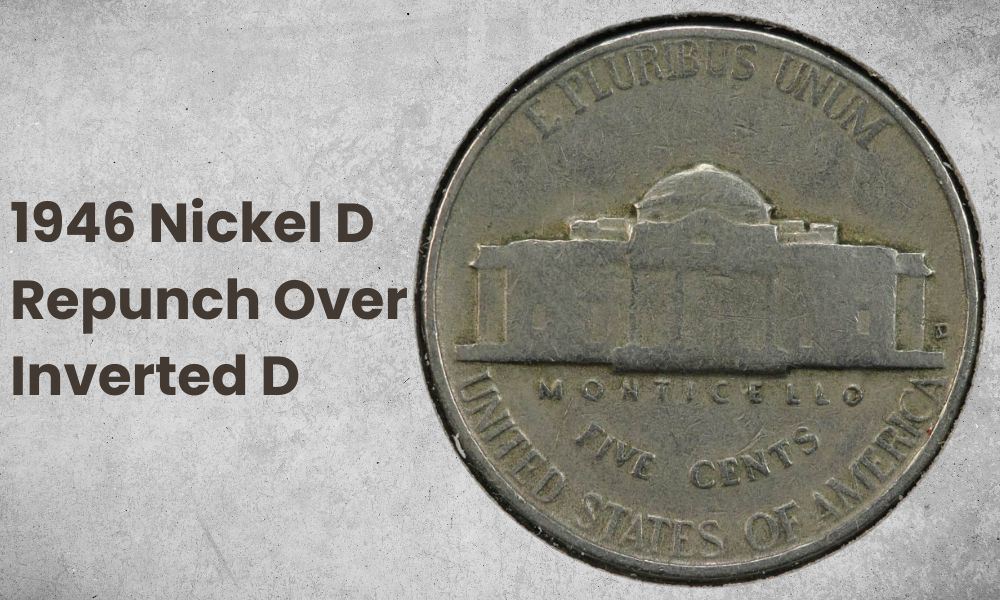
Perhaps the most exciting and most valuable error you can find in a 1946 nickel is the D repunch over an inverted D on the mint mark next to the Monticello. Of course, this is exclusive only to the coins minted in Denver.
You’ll know if your 1946 nickel has this error if you see an inverted D punched on the mint mark with the curve facing left and then repunched with an upright D facing the correct direction. Coins with this imperfection are extremely rare, so their value is quite high at around $600 to $2,500.
In 2010, an MS66 nickel with this error was auctioned off for a super high price of $2,530.
3. 1946 Nickel Die Cracks
Another common error in 1946 nickels is die cracks, aka the raised lines and bumps that develop in some coins over time on the surface of the coin. This error is caused by an old or damaged die.
It’s crazy to think that a coin that ends up cracked and damaged over time can become even more valuable, but it’s a reality for the 1946 nickel.
1946 Nickel FAQs
Is a 1946 nickel pure silver?
No, 1946 Jefferson nickels aren’t made with pure silver. During the war years, the Jefferson nickel was made with 35% silver along with other materials to save on nickel. When the war was over in 1946, the government switched the composition back to copper and nickel.
That said, there are a few rare 1946 nickels struck on silver planchets. These errors are extremely rare, making this coin expensive.
How much is a 1946 nickel worth in 2022?
Because of the high mintage of the Jefferson coin in 1946 (specifically in the Philadelphia mint), these nickels aren’t as valuable as other coins. A circulated 1946 Jefferson nickel might see a price of $0.10 to $0.40 today.
But if the Jefferson nickels were uncirculated, in excellent condition, or have rare errors, this raises the price immensely. Some rare 1946 nickels can go up to hundreds and even thousands of dollars.
What is a 1946 nickel melt value?
As of February 2023, the melt value for a 1946 nickel would be around $0.067.
How do I know if my nickel is silver?
The easiest way to determine if your nickel has some silver content is by checking the year it was minted. If the coin was produced anywhere from 1942 to 1945, you can be sure that it was a wartime nickel that was composed of copper, silver, and manganese.
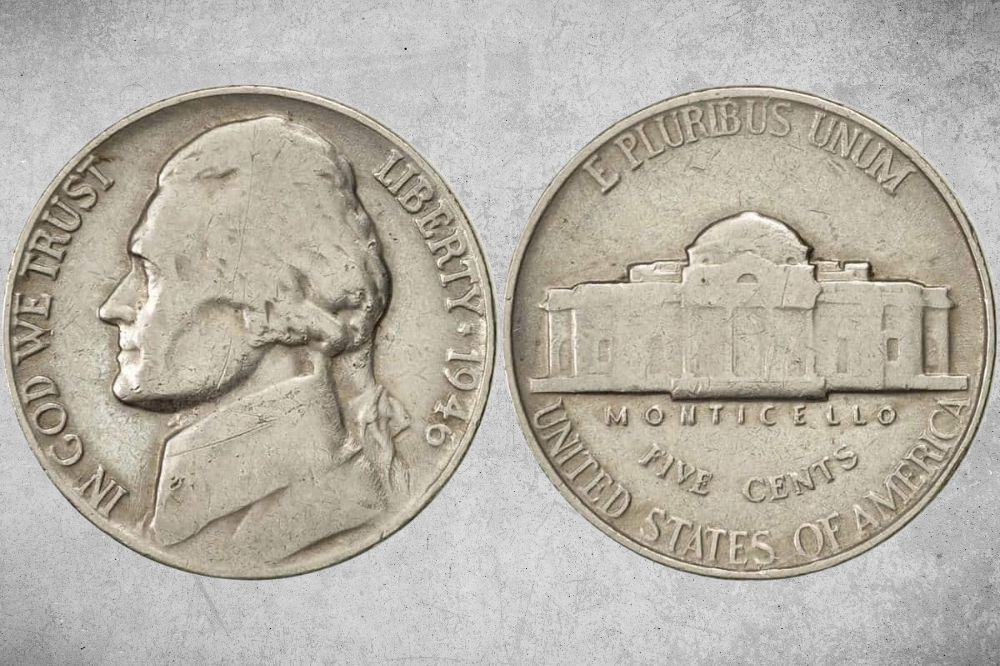
I have a 1946 nickel with no mint mark. Interested to know the value.
Hello everyone,
Does anyone know where can I sell my coins? Or redirect me or have any recommendations where I can find a website
I have a 1946 no mint mark nickel that is rusted really badly and wanted to know why this is the only coin that I have ever seen rusted before? Is it worth anything?